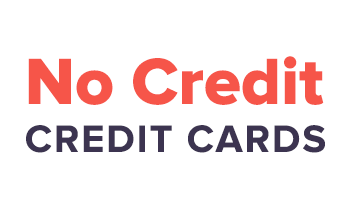Despite constant state of ‘survival mode,’ Indigenous entrepreneurs pursue their dreams

Indigenous retailer Chelsee-Marie Pettit was startled recently when customers at Toronto’s Stackt Market asked her where she donates the proceeds from her business.
The question was “just crazy” because Indigenous businesses are not charities, says Pettit, founder of aaniin retail inc., a streetwear company.
Her store is like a miniature department store for Indigenous-owned brands. Aaniin means hello in anishnaabemowin, the language of Ojibwe. Pettit is an Anishinaabe member of Aamjiwnaang First Nation.
By the new year, Pettit says she’ll be selling exclusively online.
It’s hard. She says she put up her own money to start her business and now she’s saddled with significant personal debt. But Pettit’s dream is still to run Canada’s first department store that’s Indigenous owned.
“There’s a fire under me that feels like other big brands would be able to start doing what I’m doing and take the credit away from Indigenous hands and make it a part of their businesses,” she says.
Ontario has 3,526 Indigenous-owned businesses, yet the businesses make up only 0.7 percent of ownership share in the province, according to the Ontario Chamber of Commerce.

Pettit isn’t the only one who says Indigenous entrepreneurs face barriers doing business in Toronto — from high overhead costs and a lack of access to capital and affordable real estate to misconceptions around cultural appropriation versus appreciation.
But despite the barriers, some say a program that’s focused on training Indigenous entrepreneurs is making all the difference.
“One of the primary challenges Indigenous businesses in Toronto face is the scarcity of accessible real estate,” says Raven Sutherland, marketing and events co-ordinator for aaniin retail inc.
“Much of the prime commercial space is privately owned, making it difficult for Indigenous entrepreneurs to secure locations in high-traffic areas that are crucial for business visibility and customer access.”
Reconciliation means opportunities, entrepreneur says
Sutherland said there is a problem with “capital constraints,” meaning Indigenous business owners often find they have to “bootstrap” their enterprises. That means relying heavily on personal finances to start and sustain their businesses, which is risky.
“As a result, many Indigenous businesses operate in a constant state of ‘survival mode,’ striving to overcome these barriers to achieve stability and growth,” she said.
Sutherland said an ability to adapt and find creative solutions is key, along with mentorship and collaboration from the Indigenous community in Toronto. Strategic planning, such as market research and financial management, is also crucial.
To ensure “profits remain within the Indigenous community,” she said Indigenous ownership needs to be prioritized.
“Maintaining control over our businesses and equity is crucial, rather than relying on outside capital from non-Indigenous investors,” she said. “This approach empowers our community economically and preserves our autonomy.”
Pettit says true reconciliation means Indigenous people owning their own companies and having opportunities to thrive. She says she’s stayed in business thanks to her own persistence.

Joseph Sagaj, an Anishinaabe artist whose artwork can be seen on the Toronto sign at Nathan Phillips Square, credits the Aboriginal BEST program at the Native Canadian Centre of Toronto (NCCT) in part for his success.
‘I pursued my dream,’ Indigenous artist says
Sagaj says the BEST program, which stands for business and entrepreneurship skills training, helped him hone his business skills, from inventory to bookkeeping, marketing to customer service. Sagaj is of the Sturgeon Clan and from the community of Neskantaga in Northern Ontario.
“I pursued my dream,” said Sagaj, who showed off a t-shirt he designed with the word, Spirit, on it, that’s for sale at the Cedar Basket Gift Shop. “I came here probably in 2018 and literally it was one of the best programs I’ve taken. It really taught me how to strategize more effectively in mainstream society.”
Sagaj says he started selling his designs at powwows then at conferences and events. Now, he has done private and public commissions, designed logos and illustrations, painted murals and done acrylic painting projects.
“I come from a very small reserve in northern Ontario of 300 people,” he said. “When you are put in a situation where there are four million people, with different behaviours and different interests, you have to learn how to market and market yourself.”

More than 250 people have participated in the BEST program since 2018, according to Zechariah James, social enterprises manager for the NCCT.
Many Indigenous businesses are home based
James says the program has helped more than 150 entrepreneurs start new businesses in jewelry making, clothing design, painting, health care, and IT — many of which are run out of people’s homes.
“It’s an excellent time of year to think about supporting more Indigenous businesses,” James said.
“We often get the question: ‘Can I wear indigenous-crafted jewelry or earrings? Is it appropriate for me to do so?’ Yes, absolutely it is.”
For Indigenous people dreaming of running their own business, Pettit has some advice: “If you think you have a good idea, you definitely do, just get started. You are the only one who’s ever going to make it happen.”





